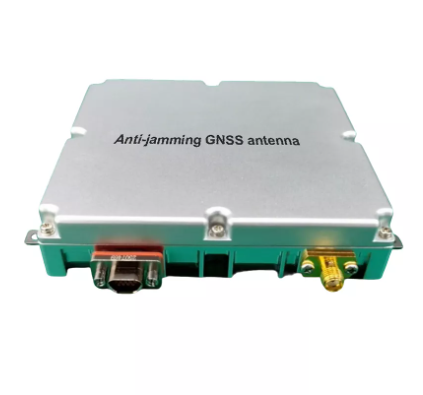
IntroductionIn a world increasingly dependent on satellite navigation, interruptions like jamming and spoofing pose significant threats. How can we ensure GPS systems remain reliable under such conditions?Enter the CRPA antenna, a key solution in the battle against interference.
Read More 
IntroductionAnti-jamming antennas are crucial in protecting GNSS systems from interference. As our reliance on GNSS for navigation and timing grows, so does the threat of jamming.This article will explore how anti-jamming antennas function, their role in modern systems, and why they are essential.
Read More 
IntroductionGlobal Navigation Satellite Systems (GNSS) are crucial for navigation, but they're vulnerable to interference. As these systems power military, aerospace, and autonomous vehicles, the risk of jamming and spoofing grows. One solution to this problem is the CRPA antenna.
Read More 
IntroductionGPS or GNSS – which antenna should you choose? The difference may seem subtle, but it has a significant impact on performance. As the demand for accurate positioning grows, understanding the distinction becomes crucial.In this article, we’ll explore the key differences between GPS and GNSS.
Read More 
IntroductionIn today's fast-paced, tech-driven world, GNSS is critical for countless applications. However, GNSS signals are weak and vulnerable to interference, which can compromise accuracy.This is where CRPA antennas come into play, offering enhanced signal reliability.
Read More 
Introduction: When Signal Loss Is an Expensive SurpriseMost hardware buyers ignore one huge factor—signal reliability—until disaster strikes. Whether a self-driving vehicle, automated port crane, or survey drone is involved, the real cost of GNSS dropout is operational chaos, lost precision, and saf
Read More English
العربية
Français
Русский
Español
Português
Deutsch
italiano
日本語
한국어
Nederlands
Tiếng Việt
ไทย
Polski
Türkçe
አማርኛ
ພາສາລາວ
ភាសាខ្មែរ
Bahasa Melayu
ဗမာစာ
தமிழ்
Filipino
Bahasa Indonesia
magyar
Română
Čeština
Монгол
қазақ
Српски
हिन्दी
فارسی
Kiswahili
Slovenčina
Slovenščina
Norsk
Svenska
українська
Ελληνικά
Suomi
Հայերեն
עברית
اردو
Afrikaans
Gaeilge
नेपाली
Aymara
Беларуская мова
guarani
Krio we dɛn kɔl Krio
Runasimi
Wikang Tagalog









